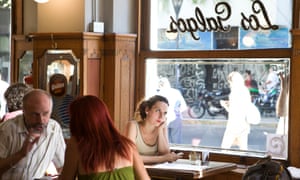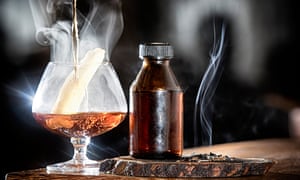Argentina’s capital has an honourable cocktail tradition, and today’s bartenders are tapping into the past to revive local drinks, albeit with a new twist

You get an interesting reaction if you tell people in Buenos Aires that you’re going for a cocktail at Los Galgos, a small corner bar on a busy street a few blocks from the city’s courthouses. They will either offer a knowing nod of approval or, if they remember it in its former incarnation, a look of incredulity.
As one of the city’s historic cafes, Los Galgos – with its 1930s wood panelling and tarnished mirrors – was part of a dying breed. One by one, from Cafe Richmond to Bar Británico, these old haunts have been shutting down. Cortado coffees and cheese-and-ham toasted sandwiches just don’t bring in enough income to cover the overheads any more.
Until recently, Los Galgos (Avenida Callao 501) seemed to be facing the same fate. But new ownership and a new business plan have brought it back to life. Now, instead of closing in the early evening when the court workers go home, it opens its arms to a very different crowd. By day, elderly men still put the world to rights over their morning media luna(croissant); by night, it’s all about the cocktails.
Los Galgos’ cocktail menu is typical of a growing niche of Buenos Aires bars where martinis and Manhattans are being pushed aside for something more local. One house special is El Pato, a potent mix of sweet and dry vermouth, gin, Campari, Cointreau and kirsch, which was invented in 1954 by Argentina’s most famous bartenders, Salvatore “Pichin” Policastro, who used it to win that year’s world cocktail championship in Switzerland.
“We have been working to reintroduce our roots and flavours,” says Renato “Tato” Giovannoni, one of the city’s leading bar entrepreneurs who is working to revive local classics, albeit with his own twist. “A new generation understands that, having a big cocktail tradition ourselves, we don’t need to copy what someone else is doing in New York.”
Giovannoni runs Florería Atlántico (Arroyo 872), a bar entered via a “secret” staircase at the back of a shop selling wine and flowers . He also makes the country’s first premium gin, Principe de los Apostoles, which uses botanicals including yerba mate, the basis of the country’s ubiquitous tea. His Balestrini negroni, named after his grandfather, takes this gin and gives it a thoroughly modern makeover, with seawater and smoked eucalyptus leaves, and serves it in an individual glass bottle.

Nowhere does nostalgia quite like Buenos Aires. Other places tapping into the past include the dimly lit, jazz-soundtracked Verne Club (Medrano 1475), andDoppelgänger (Juan de Garay 500), a bar beloved by bartenders, and so serious about good spirits that it won’t serve beer.
So, why go for a cosmopolitan, when you can try a clarito? If you’re not sure what that involves, ask the bartender. They’ll be happy to enlighten you.
Buenos Aires’ second cocktail festival, BA Cóctel , runs from 15-22 May in 50 bars around the city. The trip was provided by Journey Latin America with accommodation at Hotel Clásico (rooms from £87). Journey Latin America has a five-night stay in Buenos Aires from £875pp, including flights, transfers and B&B accommodation in a mid-range hotel (020-8600 1881, journeylatinamerica.co.uk)

















